INTRODUCTION
Creating a high-performance funnel in Meta Ads that targets various stages of the ConsumerJourney requires a structured, intelligent approach and an equally well thought implementation in Meta Ads Manager.
Here’s a detailed Step-by-Step Guide to help you set up higher performing Multi-Touch Funnels using Meta Ads.
WHEN TO USE A MULTI-TOUCH FUNNEL
If you’re marketing a brand and/or products that are more of an impulse purchase ―that is not considered purchases ―you should test a 2-stage funnel. Remember there are low cost, impulse purchases that sell without a funnel. For any business or product that is a considered purchase ―due to price point, options, or competitive options ―a well thought multi-touch funnel is potentially the optimal solution.
1. TOP OF THE FUNNEL (AWARENESS PHASE)
At the ‘Top of the Funnel’ (ToFu) the goal is to capture the attention of potential customers, or ‘prospects’ who may not be aware of the brand or products.
Objective: Grow Brand Awareness in the Target Audience.
Broader targeting with engaging content that resonates with the specific audience’s interests or challenges. Conducting primary research on existing customers will help highlight the needs, issues, values and desires you should be focusing on to “get noticed” by your prospect.
Examples include educational content, brand storytelling videos, and interactive ads that invite engagement without directly pushing for the sales ―it’s time for your audience to get to know the brand, its potential place in their lifestyle, and its values.
Carousel ads or video ads showcasing the brand’s values or customer stories can be effective. The optimal method for measuring performance includes tracking reach, impressions, and engagement rates (likes, shares, comments) to understand brand awareness and interaction levels.
Top of Funnel Execution (How To)
Follow these steps to implement the “Top” of your multi-touch funnel.
There are some options you can test against one another to see what works best for your marketing and customer acquisition challenges ―they are Meta Advantage “AI” targeting and Custom Audiences.
Meta’s Advantage targeting works well for many brands ―-Meta uses its vast data about each user to determine who will engage with your brand and ultimately buy from your brand by observing behaviors and modeling an audience to show your ads to.
Custom Audiences also work well for some brands BuyerGenomics Users can use Automated “True Customer” Acquisition ―-where your customer base is interrogated by its True Customer Targeting AI and carves out a Look Alike target that spend more and more often, leveraging its vast database of Personas to get the ideal customer that actually has bought your brand before. This model can be so effective it outperforms Advantage substantially.
Simple segmentation of “past buyers” or “2x buyers” is sometimes used in Look Alike targeting or Custom Audiences tends not to perform nearly as well, if you’re going to test a Custom Audience.
In the example below we tested standard Meta Advantage vs a Custom Audience, each having its own unique funnel to isolate the target audience as the dependent variable.
Option 1: Start with a Custom Audience at the Top of the Funnel
Step 1: Log into your Meta Ads Manager.
Step 2: Click on “Create” to start a new campaign.
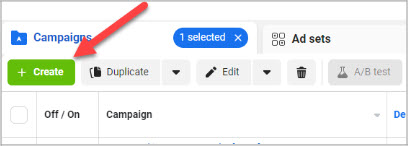
Step 3: Choose “Awareness” as your Campaign Objective.
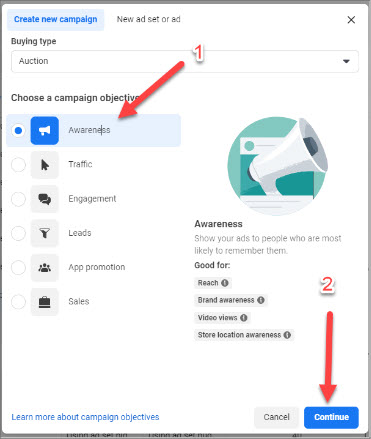
Step 4: Name your campaign with a clear identifier, for example, “ToFu-High-Income-USA.”

Step 5: Set your daily or lifetime budget and click ‘Next’
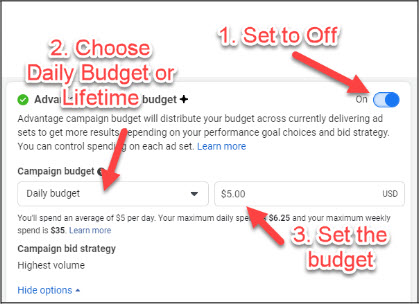
Step 6: Proceed to create a new ad set within this campaign.
Step 7: Name your ad set with a clear identifier, for example, “TOFU – High Income US.

Step 8: For targeting, select ‘Switch to Original Audience Options.’
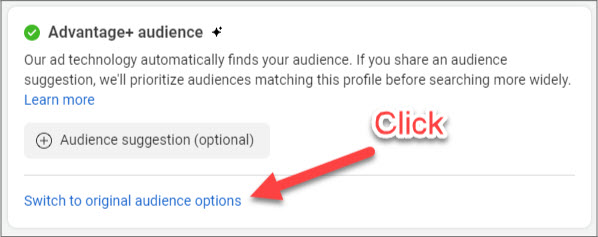
And then click ‘Use Original Audience’

Step 9: Choose “Custom Audience” and then set your audience targeting criteria:
- Custom Audience
- Locations (Geo-Targeting)
- Age
- Gender

Step 10: Add any Meta Interest targeting.
For example ‘Household income: top 5% of ZIP codes (US)’

Step 11: In the placements section, confirm that you see the option ‘Advantage+ placements’ to maximize your reach.

Step 12: Click Next
Step 13: Choose your ad format and create your ad content focused on driving awareness.
Step 14: Insert the URL to your homepage or the page most relevant to help the visitor learn about your brand.
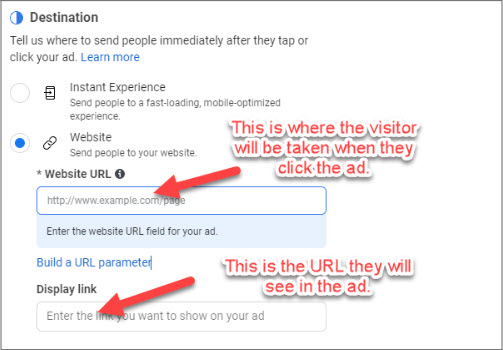
Step 15: Review and Publish your Top of the Funnel Campaign.
Option 2: Meta Advantage+ Audience
Step 1: Log into your Meta Ads Manager.
Step 2: Click on “Create” to start a new campaign.

Step 3: Choose “Awareness” as your Campaign Objective.
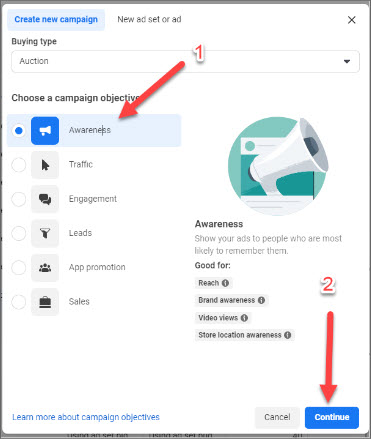
Step 4: Name your campaign with a clear identifier, for example, “ToFu-High-Income-USA.”

Step 5: Set your daily or lifetime budget and click ‘Next’

Step 6: Proceed to create a new ad set within this campaign.
Step 7: Name your ad set with a clear identifier, for example, “TOFU – High Income US.

Step 8: For targeting, do not make any changes.
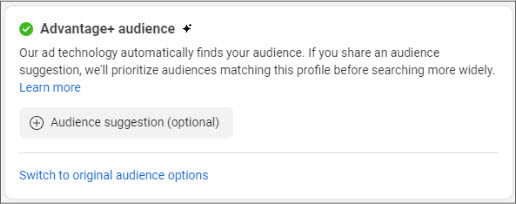
Step 9: In the placements section, confirm that you see the option ‘Advantage+ placements’ to maximize your reach.

Step 10: Click Next
Step 11: Choose your ad format and create your ad content focused on broad brand messaging.
Step 12: Insert the URL to your homepage as the destination.

Step 13: Review and Publish your Top of the Funnel Campaign.
2. MIDDLE OF THE FUNNEL (CONSIDERATION PHASE)
Objective: Drive traffic to a specific landing page to engage users who showed interest at the ToFu stage.
Middle of Funnel Execution (How To)
Follow these steps to implement the “Middle” of your multi-touch funnel.
Step 1: Create a new campaign in Ads Manager with the objective “Traffic.”
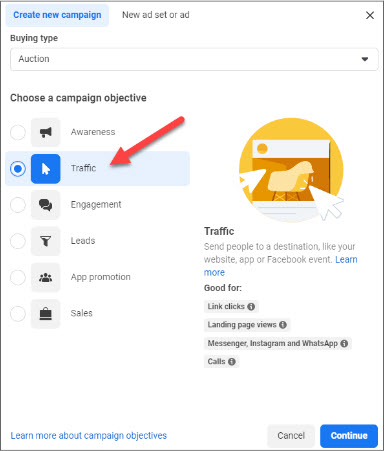
Step 2: Choose a campaign Setup
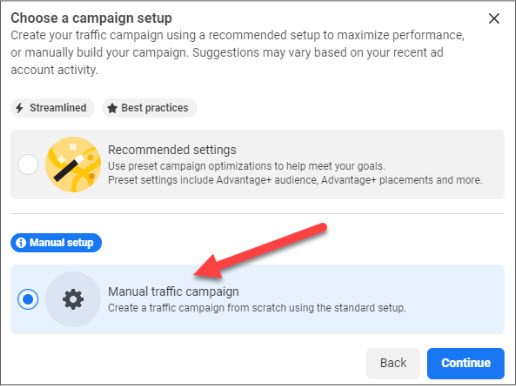
Step 3: Name your campaign, for example, “MOFU – Landing Page Engagement.”

Step 4: Set your daily or lifetime budget and then click ‘Next’

Step 5: For the ad set targeting, select the custom audience created from the interactions (views or clicks) on the TOFU campaign ads. You can create this by using the Facebook Pixel to track who visited your homepage but didn’t take further action.
Step 6: In the placements section, confirm that you see the option ‘Advantage+ placements’.
You may opt to do “Manual Placements” and select the platforms where your audience is most active. This may increase CPMs by up to 50%.

Step 7: Design your ad with compelling content that highlights the value of visiting the specific landing page you’re testing.
Step 8: Input the URL of your special landing page as the destination.
Step 9: Input the URL of your special landing page as the destination.
3. BOTTOM OF THE FUNNEL (CONVERSION PHASE)
Objective: Convert interested users into customers.
Bottom of Funnel Execution (How To)
Follow these steps to implement the “Bottom” of your multi-touch funnel.
Step 1: Start a new campaign in the Ads Manager with the objective “ Sales.”
Step 2: Choose a campaign Setup
Step 3: Name your campaign, e.g., “BOFU – Conversion Focus.”
Step 4: Set your daily or lifetime budget and then click ‘Next’
Step 5: For targeting, select the custom audience of users who clicked on your MOFU campaign but haven’t made a purchase yet. This involves setting up the Facebook Pixel correctly to track these interactions
Step 6: In the placements section, confirm that you see the option ‘Advantage+ placements’. You may opt to do “Manual Placements” and select the platforms where your audience is most active. This may increase CPMs by up to 50%.
Step 7: Create your ad with a clear and effective ‘call to action,’ such as a limited-time offer or discount code, to incentivize immediate purchases.
Step 8: Set the conversion event you want to track, like “Purchase.”
Step 9: Review your campaign setup and Publish.
CONCLUSION
In this Comprehensive Meta Ads Guide, we’ve explored the intricacies of setting up a high-performance multi-touch funnel using Meta Ads, tailored to cater to various stages of the consumer journey.
From the initial awareness at the top of the funnel through consideration in the middle, to conversion at the bottom of the funnel, each phase has been thoughtfully designed to optimize interaction with potential customers ―and maximize sales conversions.
The key to funnel success lies in continuous testing and refinement. While it is possible to nail it on the first try, it is not typical, so plan on several iterations of messaging, creative, offer and funnel depth (you may do better using just top and bottom of funnel for example)
Regularly analyzing campaign performance, adjusting tactics, and staying updated with Meta’s evolving tools and features will help ensure that your marketing efforts are effective and yield better results.
BONUS: WHAT TO DO IF YOUR STUCK…
If you’re trying to raise your performance, and having a hard time hitting your acquisition and retention goals, qualified e-commerce and retail or brick & click businesses can request no-cost, Full Feature Access to BG True Customer Targeting. Using the most advanced Customer Intelligence we know of, this highly focused AI tool acquires higher value, net new Customers ―-those who spend more & more often.
As you implement these steps, keep the focus on understanding and meeting the needs of your audience, thereby driving better engagement, higher conversions, and ultimately, creating lasting customer relationships.
This guide is Your Roadmap to leveraging Meta Ads and testing, learning and creating a functional marketing funnel that delivers success across the stage of the Consumer Journey.





